- Home
- T. J. English
The Savage City Page 10
The Savage City Read online
Page 10
“We declare our right on this earth,” said Malcolm X, “to be a human being, to be respected as a human being, to be given the rights of a human being in this society, on this earth, in this day, which we intend to bring into existence by any means necessary.”
Dhoruba fell under the spell of Minister Malcolm’s words, many of them contained in speeches reprinted verbatim in the newspaper Muhammad Speaks, smuggled by inmates into the prison. Though they were merely words printed on a page, without the power of his piercing verbal presentation, Malcolm’s message stoked embers within Dhoruba’s soul. Through Mjuba and other Muslim inmates locked away inside the Box, the kid from the Bronx began a process of historical reclamation and indoctrination—one that mirrored the rising tide of an entire generation.
As he sat in the prison library reading newspaper accounts of this kid named Whitmore—a young black male like himself, born in the same month of the same year, trying to exist as a human being in the white man’s world—Dhoruba felt a connection. He absorbed such stories, of young black men caught in the grip of what he increasingly recognized as a racist criminal justice system, and filed them away in his mind, where they would inform and inspire his growing political consciousness.
FROM WITHIN HIS tiny room at Bellevue Psychiatric Hospital in Manhattan, George Whitmore felt his world crumbling around him. He’d been charged with two major felonies in Brooklyn and a double murder in Manhattan. He was notorious. During his brief stay at the Brooklyn House of Detention after his arrest, he’d been ridiculed by inmates: Hey George, how was that white pussy? Damn, Whitmore, how you let those detectives play you like that? But all the trash talk was background noise; his real concern was the words he read in newspaper accounts of his arrest: “facing two life sentences” “if convicted, likely to receive the death penalty.”
Death. It was a strange prospect for a relatively healthy nineteen-year-old boy to consider. George pondered the options: lethal injection, gas, the electric chair.
By the time he was transferred to Bellevue, George was overcome by depression. To preserve his sanity, he began scratching out thoughts in a daily diary:
I have never been in trouble in my life. And don’t intend to get in any. This just goes to show you! You don’t have to get in trouble to go to jail….
I went out to see a doctor to take a test. Then I came back down and began to think. I said to myself, George you don’t realize how much trouble you’er in. Even though you don’t do it. And what if they say you are guilty. You know that you will be doing time for someone else who ain’t worth it. The only thing that comes to my mind is when I get out. And why did this happen to me?…
Yesterday I was called out to talk to a doctor who seem nice. While talking to him I kept thingen is he going to help me or is he a DA’s man. I have learn that you can take one thing and see it dun the other way around.
George’s attorney, Jerome Leftow, visited him a number of times, first at the House of Detention and later at Bellevue. By most standards, Leftow was in over his head with the Whitmore case. Though he’d been a criminal defense attorney for seven years, he’d never tried a homicide case. Though he was anxious about taking on such a high-profile case, he was heartened by the fact that Whitmore’s mother, whom he met at his office after George was incarcerated, liked him and wanted him to stay on the case.
Leftow was idealistic, and he was sympathetic with Whitmore’s predicament. As he got to know George, he could see how easily he might have buckled under police questioning. “I asked Whitmore, ‘Were you beaten?’” he recalled years later. “He said, ‘I was pushed around.’ That was the most difficult thing to understand. At first I didn’t understand what George was trying to tell me. I was still thinking about police brutality in the usual sense where the prisoner is tied to a radiator and beaten up. It took me a while to realize that George was the kind of kid that, if a detective used a harsh voice, it was the same as being struck.”
A psychiatrist who evaluated Whitmore’s handwriting, in his Bellevue diary, agreed with Leftow’s assessment. Wrote the doctor: “He is without guile, somewhat repressed emotionally, and therefore likely to be infantile in some areas. Essentially optimistic, he tries most of the time to look on the bright side of life, often having fantasies of being accepted in a world which is foreign to him wherein he dreams of himself as being admired, wanted, loved.”
Whitmore was supposed to have been transferred from Bellevue after two months of evaluation, but when late June rolled around he was still buried deep within the hospital bureaucracy.
While visiting George, Leftow was stunned when a female doctor mentioned offhand that Whitmore was receiving injections of sodium amytal, commonly known as a “truth serum.” Leftow was furious. “It broke every rule against self-incrimination. No written approval was ever gotten. I was never asked. His parents were never asked. This was a terribly wrong thing. I had a discussion with the doctor. He told me they had given him truth serum. The results were inconclusive. The doctor said they were studying people accused of sex crimes and they thought George would be a perfect person to test. I’m sure the district attorney’s office knew. I am absolutely sure about that. But of course they never told me. It was just an accident that I found out.”
Leftow tried to make an issue of these extralegal injections as a violation of Whitmore’s rights, but his efforts were quickly squelched by a judge—one of many objections that would be shot down by prosecutors and judges as they tried to expedite prosecution of the Career Girls Murders case.
Far beyond the boundaries of Bellevue Hospital—where Whitmore would spend his twentieth birthday in a drug-induced haze—the struggle continued. In Washington, D.C., dignitaries gathered to inaugurate a historic occasion. On the morning of July 2, President Lyndon Johnson was joined by Martin Luther King Jr. and other civil rights leaders at the White House as he signed into law the Civil Rights Act of 1964. This legislation was seen as a direct consequence of the March on Washington—and as a tribute to the late President Kennedy, who had put the bill before Congress just weeks before his assassination.
To King and others who had been marching, protesting, getting arrested, hosed down, and beaten as advocates for civil rights, it was a momentous occasion. But out on the streets of America’s big cities, it was dismissed by many as pie in the sky.
In New York City, frustration over the glacial pace of progress over civil rights was matched by mounting anger over images of black people being clubbed and attacked by police dogs and murdered by white supremacists in the South, often with official support. This seething resentment was made worse by the daily reality of poverty and hopelessness in places closer to home, such as Harlem, the Bronx, and Brooklyn. Writer James Baldwin, Harlem born and raised, sounded alarm bells with his 1963 book The Fire Next Time:
This past, the Negro’s past, of rope, fire, torture, castration, infanticide, rape; death and humiliation; fear day and night, fear as deep as the marrow of the bone; doubt that he was worthy of life, since everyone around him denied it; sorrow for his women, for his kinfolk, for his children, who needed his protection, and whom he could not protect; rage, hatred, and murder, hatred for white men so deep it often turned against him and his own, and made all love, all trust, all joy impossible…. This is the message that has spread through streets and tenements and prisons, through the narcotics wards, and past the filth and sadism of mental hospitals to a people from whom everything has been taken away, including, most crucially, their sense of their own worth. People cannot live without this sense; they will do anything whatever to regain it. This is why the most dangerous creation of any society is that man who has nothing to lose.
For those who’d been paying attention, the city seemed a powder keg ready to blow. And that’s exactly what happened, over a tumultuous six nights in July 1964.
The Harlem riots of 1964 weren’t triggered exclusively by outrage over George Whitmore’s coerced confession, but his story undoubtedly played a
role. The arrest of a suspect in the case brought sighs of relief among white folks and the mainstream press, but the Negro community saw things differently. In the Amsterdam News, the city’s preeminent black newspaper, the headline read: “Negro Youth Claims False Confession.” The article focused not on the NYPD’s success in finding the killer, but on the doubts that had been raised about his confession. The clear implication of the Amsterdam News’s coverage was that Whitmore was being framed. It was one more grievance to be added to James Baldwin’s searing catalog of atrocities past and present.
The incident that actually set off the riots was an altercation between a cop and a black teenager. At 9:20 A.M. on Thursday, July 16, fifteen-year-old James Powell was sitting with fellow students on a stoop near a high school building on East Seventy-sixth Street. The neighborhood was predominantly Irish and German. The students, all of them black, were waiting for their summer school class to begin in ten minutes. Next door, a white resident was watering flowers in front of his house. After an unfriendly exchange of words between the resident and the black “interlopers,” the resident turned his hose on the students and said, “Dirty niggers, I’ll wash you clean.”
Some of the students jumped out of the way, but the white man kept spraying them. In return, the kids threw a can of soda and a bottle in his direction. Then James Powell went after the man, who dropped the hose and ran away toward a nearby apartment building.
At that moment, an off-duty cop named Thomas Gilligan was leaving a television repair shop across the street. When he saw the black kid chasing the white man, he ran over to help. Gilligan was dressed in street clothes, with no indication that he was a police officer. He pulled out his gun.
When Powell saw the man he was after duck into an apartment building, he gave up the chase. When he turned around, Gilligan was standing there. The off-duty officer fired three shots. Powell went down.
A fellow student ran over and knelt beside his friend. “Jimmy, what’s the matter?” he said. Powell didn’t answer; blood gurgled from his mouth. The student turned to the man and said, “Why did you shoot him?”
Gilligan answered, “This is why.” He took a police badge from his pocket and pinned it to his shirt. Then, according to the student, he said, “This black bastard is my prisoner. Somebody call an ambulance.”
There would be many conflicting eyewitness accounts of the shooting. Gilligan claimed he told Powell twice that he was a police officer, and that each time he did, the young man lunged at him with a knife. The second time, he opened fire.
The students disputed the claim that Powell had a knife, though some conceded that he may have lunged at Gilligan. A knife was found at the scene, but its blade was closed.
Within a few hours of the shooting, James Powell was declared dead at the hospital.
Even before the news of Powell’s death, trouble was in the air. A sprawling group of community activists gathered at the sight of the shooting; that night, the local TV newscasts were filled with angry protesters sounding off about police brutality. The police department kept Lieutenant Thomas Gilligan under wraps and said nothing.
The next day, Friday, the protests were more organized and even angrier. The Congress for Racial Equality (CORE) led a group of protesters—mostly blacks and Latinos, with some whites—who gathered first at the location where Powell was killed and then marched toward the Nineteenth Precinct station house on East Sixty-seventh Street. The police would not let the sprawling crowd of protesters block traffic in front of the precinct, though they were allowed to picket on a nearby avenue. The mood was angry, and once again the cameras and reporters were there to record every moment. When the crowd dispersed later in the afternoon, protesters and passersby traded insults—mostly white drivers shouting racial epithets as they passed and then quickly pulling away.
There was no official statement from the police, and little outreach between police and the community. The negative energy was building, with little or no attempt to understand what happened or anticipate what lay ahead.
Saturday was hot and humid, a typical summer day in the city. Another protest took shape, this time in Harlem. By early evening the crowd had grown to around five hundred people. Speakers and rabble-rousers roamed over 125th Street, shouting over bullhorns. Someone proclaimed, “We got a civil rights bill and along with the bill we got a dead black boy. This shooting of James Powell was murder!” Another voice said, “It’s time we let the Man know that if he does something to us we’re going to do something back. You kick me once and I’m going to kick you twice!”
Among the protesters was William Epton, a well-known self-pro-claimed black communist and leader of a group called the Progressive Labor Movement. From a soapbox on Seventh Avenue, Epton called for armed insurrection.
Someone with a bullhorn yelled, “Let’s march to the station!” The growing throng began moving toward the Twenty-eighth Precinct station house on West 123rd Street between Seventh and Eighth avenues. Garbage cans were knocked over, glass broken, bottles thrown. Police commanders at the scene called in for reinforcements.
Among the officers in Harlem that day was Robert Leuci, a member of the department’s highly touted Tactical Patrol Force (TPF). Just twenty-four years old, Leuci had been on the job for only three years. He was called into work that day to deal with crowd control. Leuci and his partner, Ronnie Heffernan, were sent up to the rooftops. In Harlem and other black neighborhoods, where cops were mostly considered an unwelcome presence, rooftops were a source of danger. Youths gathered atop tenement roofs to serenade the police with a symphony of bricks, bottles, rocks, and other missiles.
Around 10:00 P.M., Leuci heard a loud sound—pop pop pop pop—in rapid succession. He said to his partner, “Hey, you hear that? Somebody’s setting off firecrackers.” Heffernan listened, then shook his head. They both realized at the same time: That ain’t firecrackers. It’s gunfire.
They headed down to the street and walked into the middle of a full-blown riot. Years later, Leuci remembered the scene:
The noise was incredible, an ocean of sound that came in waves—people screaming, sirens wailing, the sound of breaking glass, shots fired. Traffic had been diverted from 125th Street and was backed up on the side streets, with horns honking and white people in their cars looking terrified. On 125th Street was a battleground, with police and looters in hand-to-hand combat. Some cops were firing warning shots into the air, which caused people to scatter, regroup, and then come back with even more force. I bumped into another TPF cop, Dave Christian, who was driving a sergeant when two of his tires were blown out. I told Dave I could swear I saw tracer rounds ricocheting off a building on the avenue. Dave’s eyes got real wide, and he smiled.
Leuci was shocked by the sheer chaos of what was unfolding all around him, but as a TPF cop who interacted with the locals in an intimate and sometimes combative way, he had sensed a reckoning like this might be coming.
TPF had been instituted in 1959, another special unit created by Commissioner Stephen Kennedy. It was designed as a kind of special forces squad—a crew of big, tough cops who climbed fire escapes, traversed rooftops, and busted down doors. Their nickname was Kennedy’s Commandos.
One of TPF’s assignments was to deal with youth gangs and serious criminals. In doing so, however, they often stormed through buildings and busted into the apartments of average citizens. In black and Hispanic communities, they were despised.
Some TPF cops were more brutal than others. Leuci had to pull strings to get into the unit because, at five foot nine, he did not meet the unit’s height requirement. “I guess I had something to prove,” said Leuci. “I was as gung ho as anybody. I was a racist cop like everybody else, but I didn’t want to be.”
Leuci’s conscience sometimes got the better of him; his Italian American father was an armchair socialist who read the Daily Worker and warned his son that the oppression of Negroes in the United States would one day come home to roost. When his son became a cop, Leuci
Sr. wasn’t exactly thrilled.
Leuci thought his father was nuts. Like other Italian cops, he sometimes used pejoratives like tuttsoon or yom to describe black people. (Irish cops tended to favor the fully Americanized epithets—nigger, spade, and jig.) Still, he had to admit that the level of poverty in Harlem, the South Bronx, and parts of Brooklyn could be downright shocking. “There were no social services in these neighborhoods,” he remembered. “Nobody picked up the garbage. In East Harlem people would throw their garbage out the back window and it piled up almost to the first-floor windows. And there were rats everywhere. More than once I saw young children who had toes gnawed to stubs because their apartments were infested with rats. In the winter people froze to death because they had no heat, and of course there was no such thing as air-conditioning at the time in those neighborhoods.”
Poverty created a sense of alienation; the brutishness of police units like TPF created anger. “They hated us. And you respond to that hatred with a hatred of your own.”
According to Leuci, police brutality was not uncommon. Some cops sought out tactical patrol because they were the kind of people who liked to bust heads. At the time, Leuci didn’t question what he saw. Like any TPF cop, he was expected to show he had the right stuff. “I walked in on a lot of beatings. And when you walked in on a beating, you were expected to add a kick or a punch of your own to show you were with the program. Some cops were more brutal than others. Some of this was because there was brutality all around us—it absorbed us, inhabited us, and made us feel a kinship that no outsider could ever understand.”

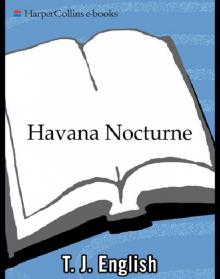 Havana Nocturne
Havana Nocturne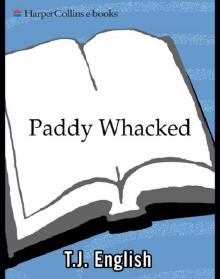 Paddy Whacked
Paddy Whacked American Gangsters
American Gangsters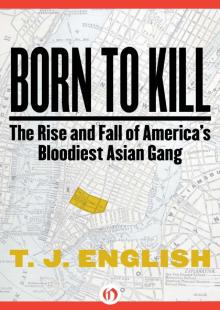 Born to Kill
Born to Kill Westies
Westies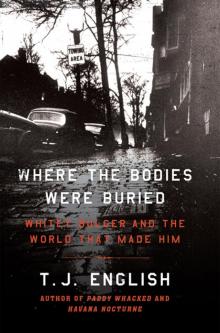 Where the Bodies Were Buried
Where the Bodies Were Buried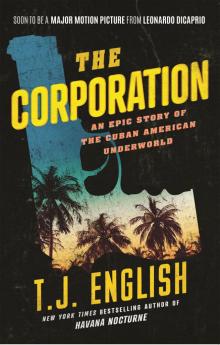 The Corporation
The Corporation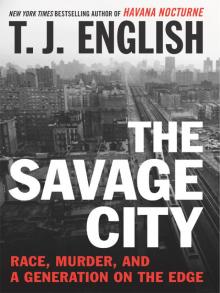 The Savage City
The Savage City